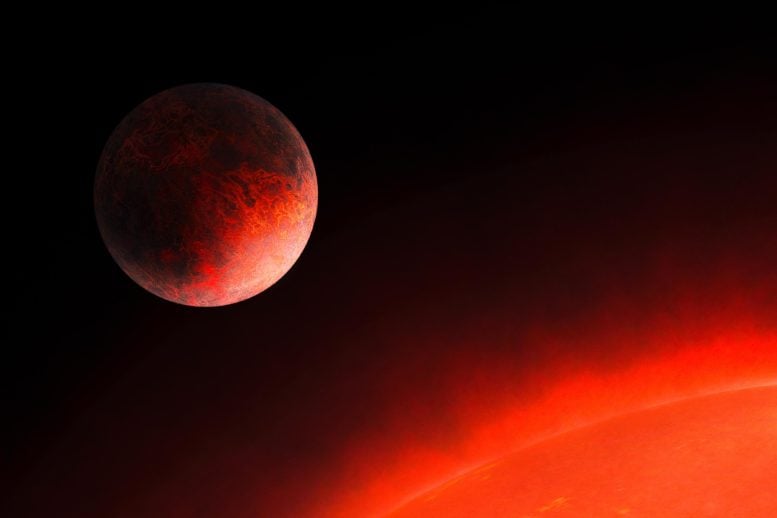An illustration of a red dwarf star orbited by an exoplanet. Credit: NASA/ESA/G. Bacon (STScI)
An international team of researchers has discovered a new planet, GJ 367 b, whose surface temperature may reach 1,500 degrees Centigrade – hot enough to melt all rock and metal – and which takes only eight hours to orbit its star.
In a new study, published in the Science journal, the researchers show that the planet, which is 31 light-years from Earth, is one of the lightest among the nearly 5,000 exoplanets (planets outside our own solar system) that are known today, with half the mass of Earth. It has a diameter of just over 9,000 kilometers – slightly larger than
Artist’s impression of the newly discovered planet. Credit: SPP 1992 (Patricia Klein)
The study involved 78 researchers and was led by astronomers at the Institute of Planetary Research at the German Aerospace Center (Deutsches Zentrum für Luft- und Raumfahrt; DLR).
Lead author Dr. Kristine Lam, from the DLR, said: “From the precise determination of its radius and mass, GJ 367b is classified as a rocky planet. This places it among the sub-Earth sized terrestrial planets and brings research one step forward in the search for a ‘second Earth’.”
GJ 367 b belongs to the “ultra-short period” (USP) group of exoplanets that orbit their star in less than 24 hours. “We already know a few of these, but their origins are currently unknown,” said Dr. Lam. “By measuring the precise fundamental properties of the USP planet, we can get a glimpse of the system’s formation and evolution history.”
Following the discovery of this planet using TESS and the transit method, the spectrum of its star was then studied from the ground using the (function(d, s, id){
var js, fjs = d.getElementsByTagName(s)[0];
if (d.getElementById(id)) return;
js = d.createElement(s); js.id = id;
js.src = "https://connect.facebook.net/en_US/sdk.js#xfbml=1&version=v2.6";
fjs.parentNode.insertBefore(js, fjs);
}(document, 'script', 'facebook-jssdk'));
Read original article here
